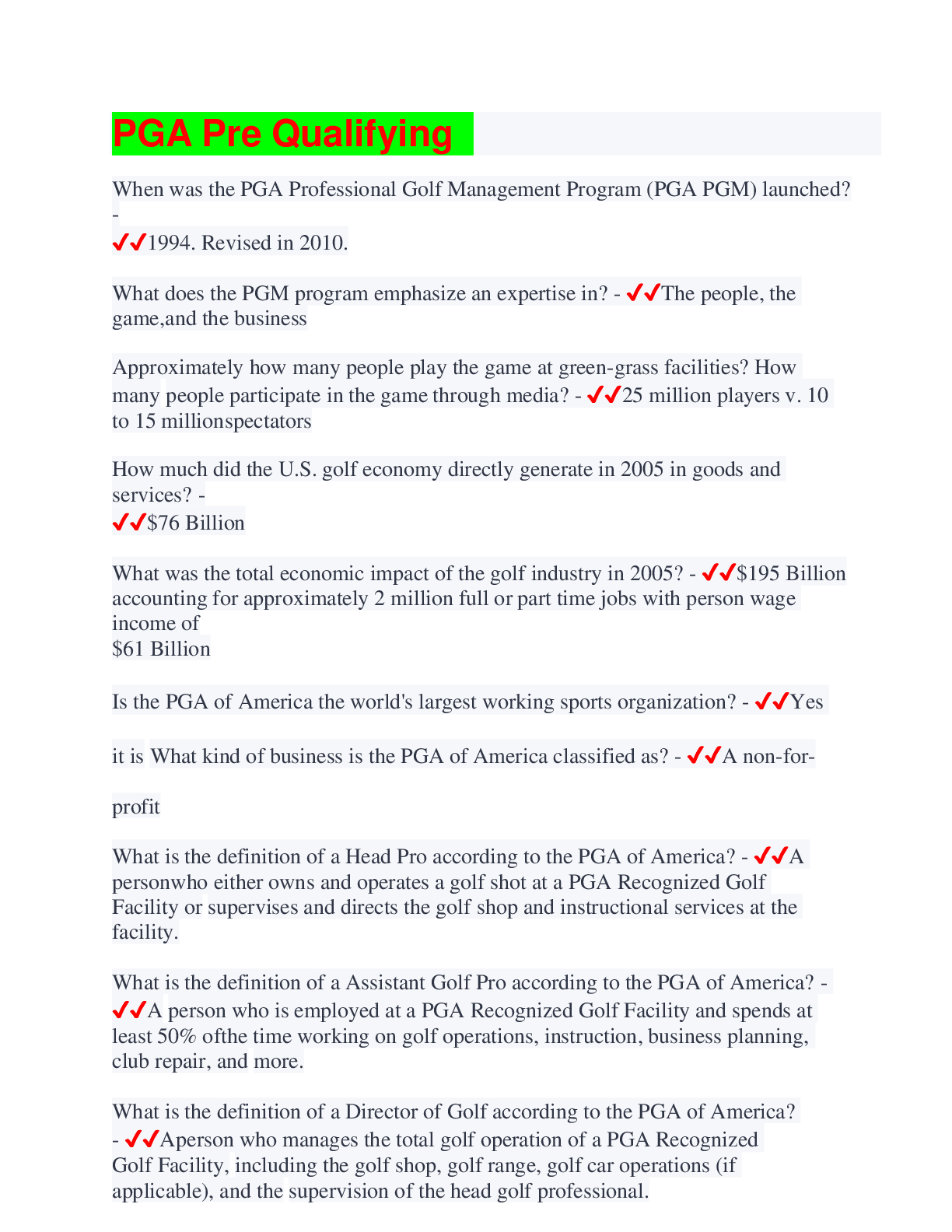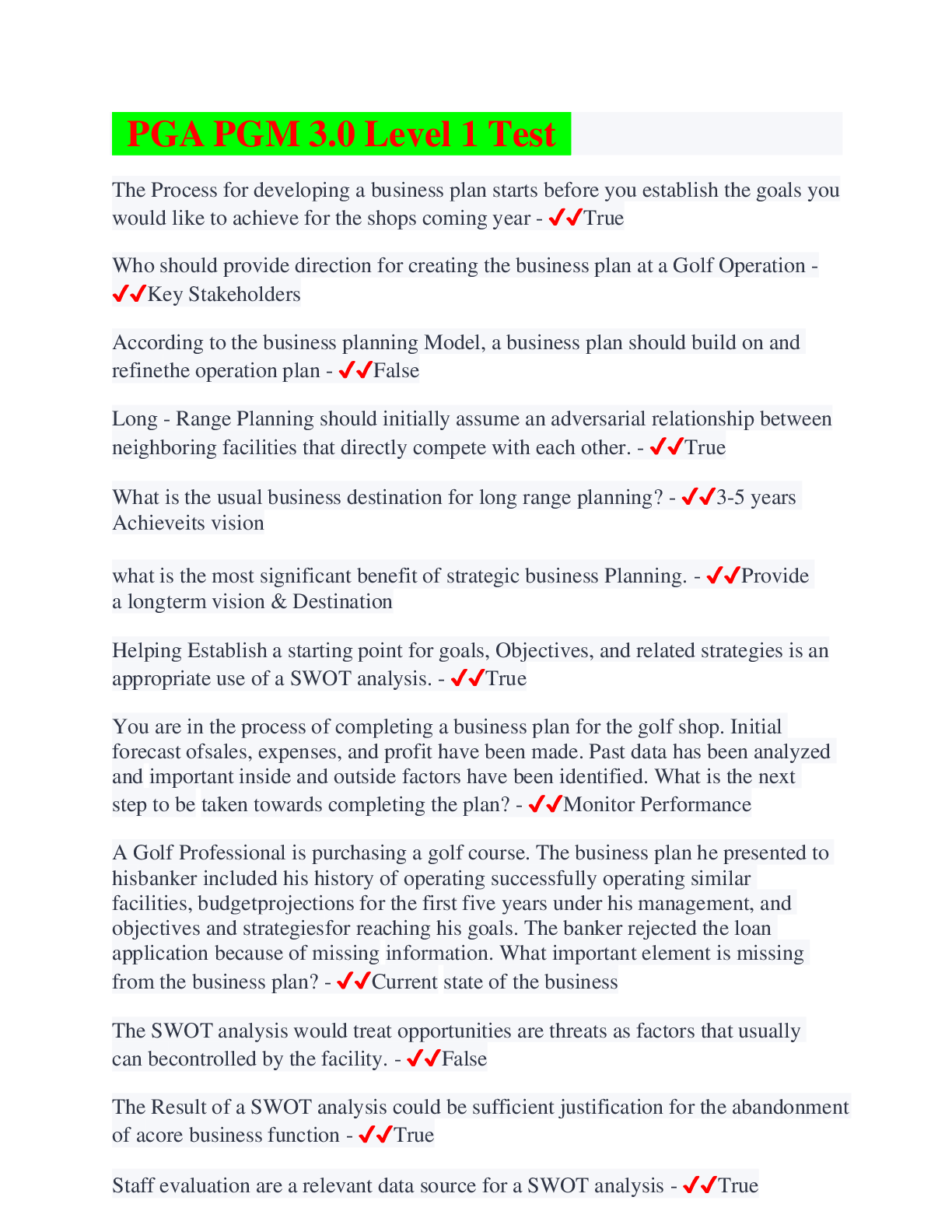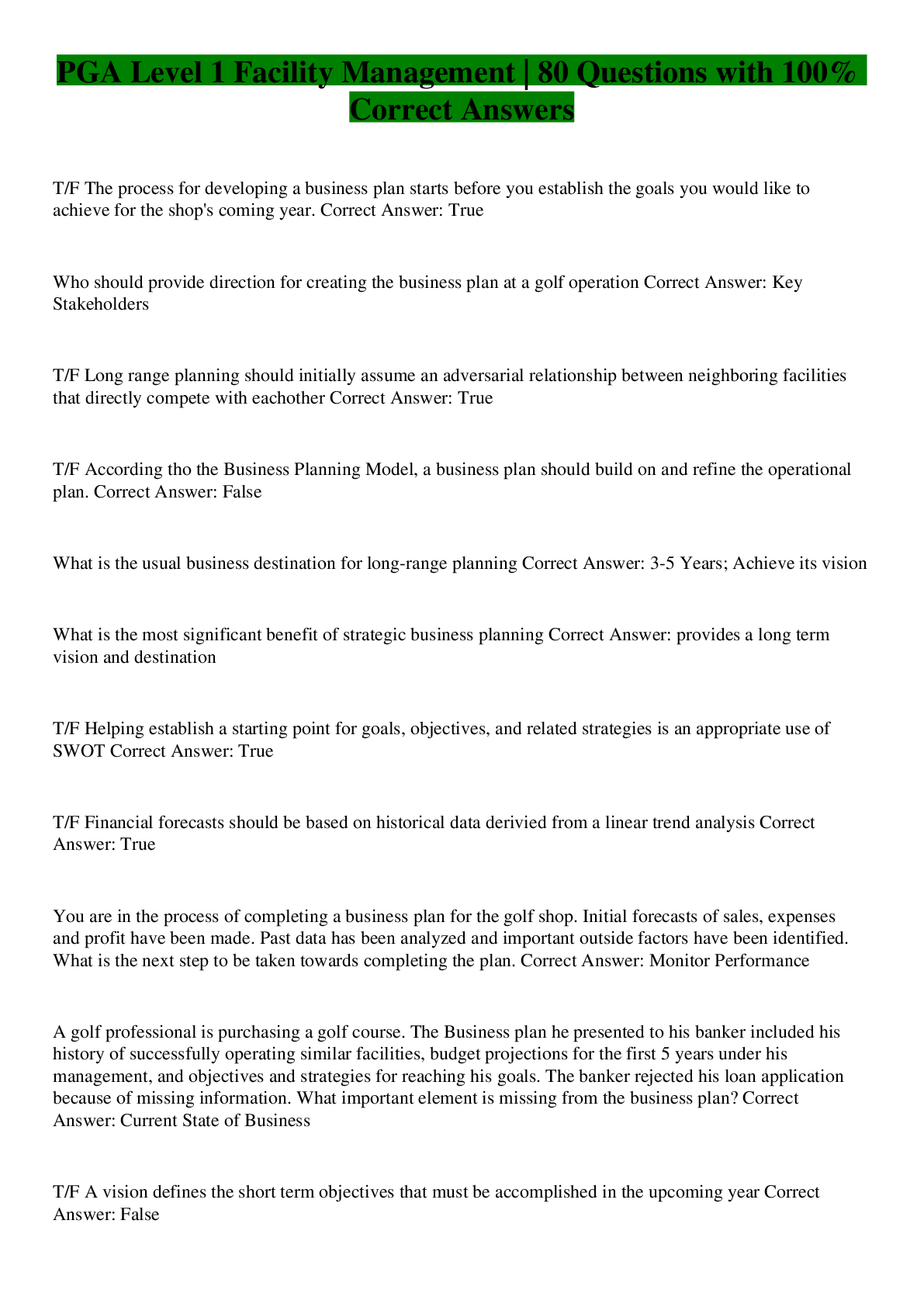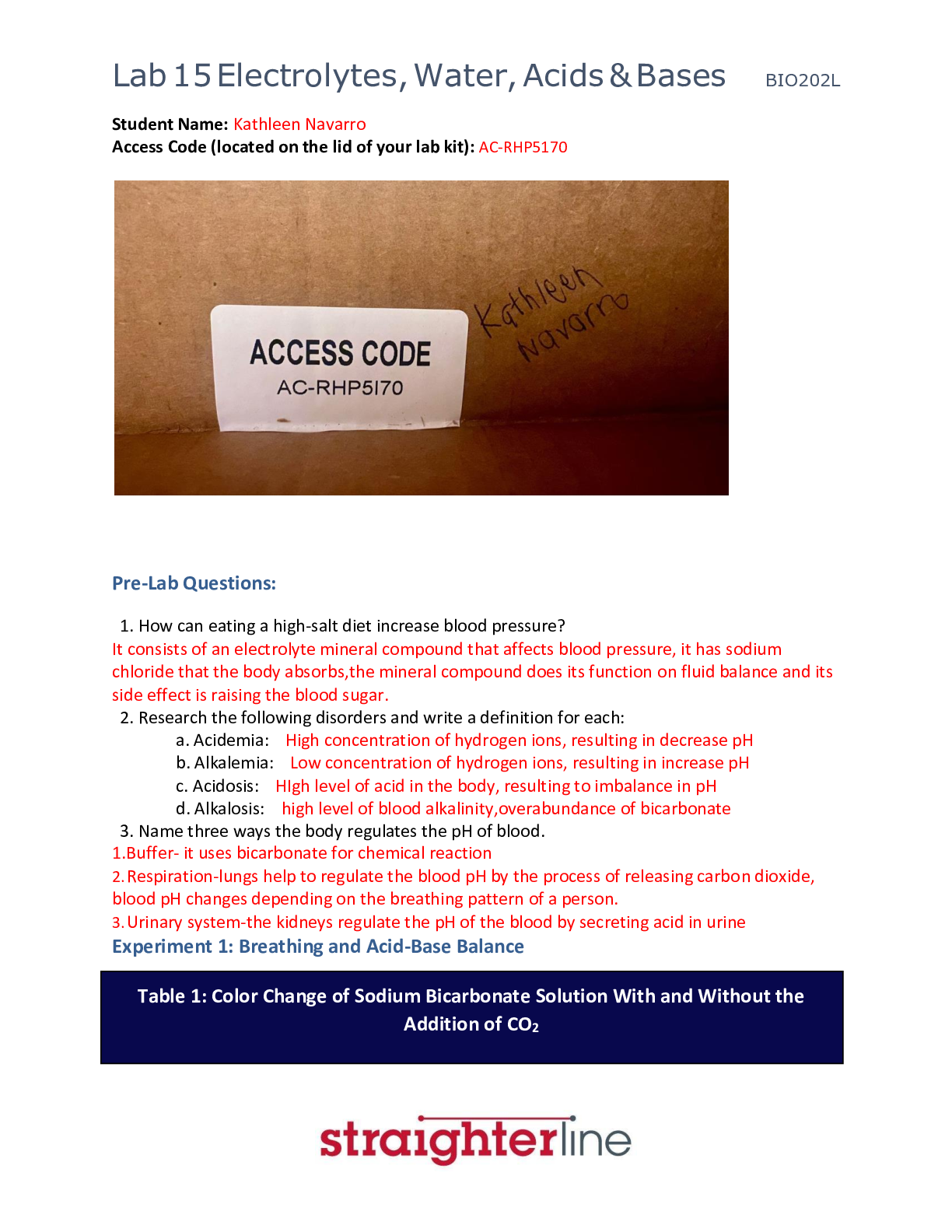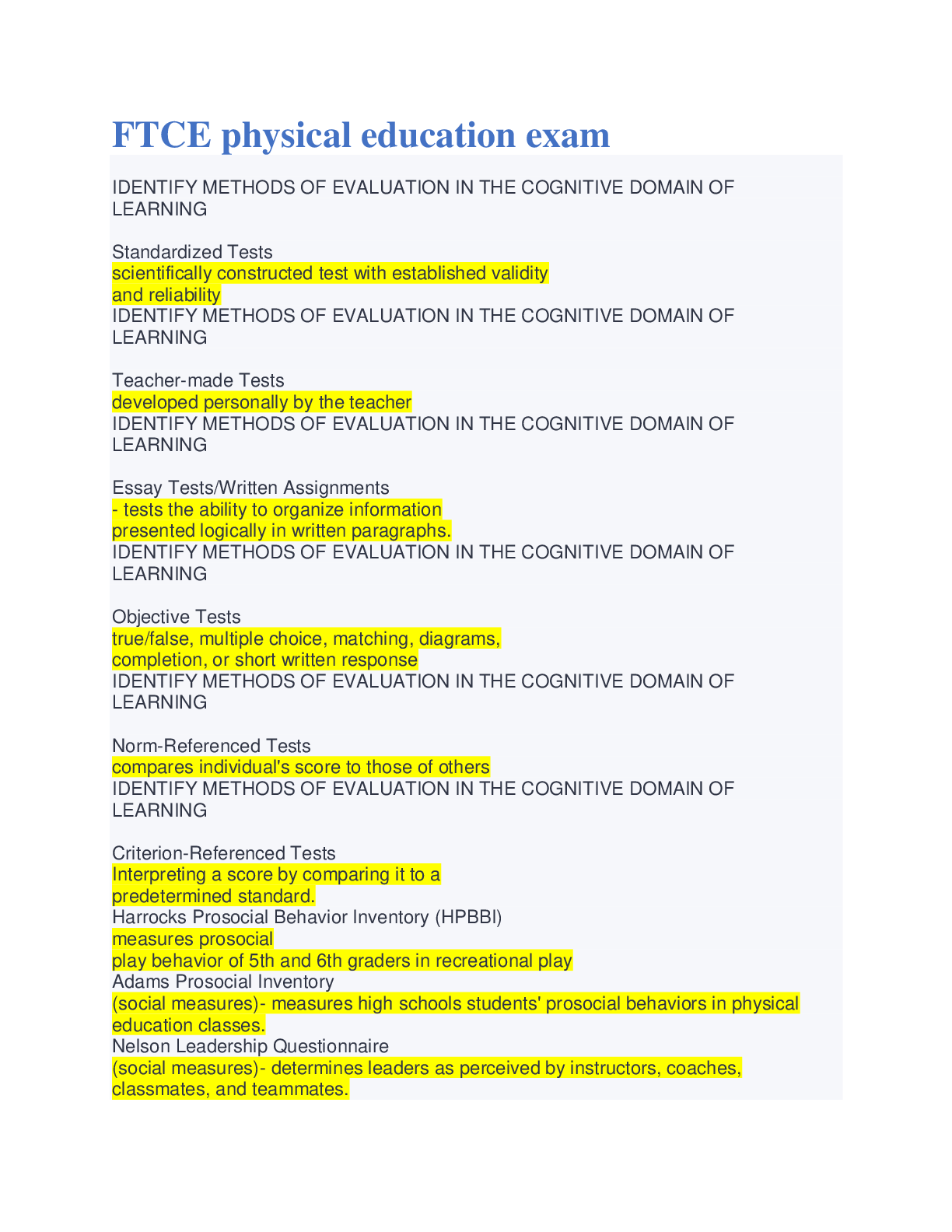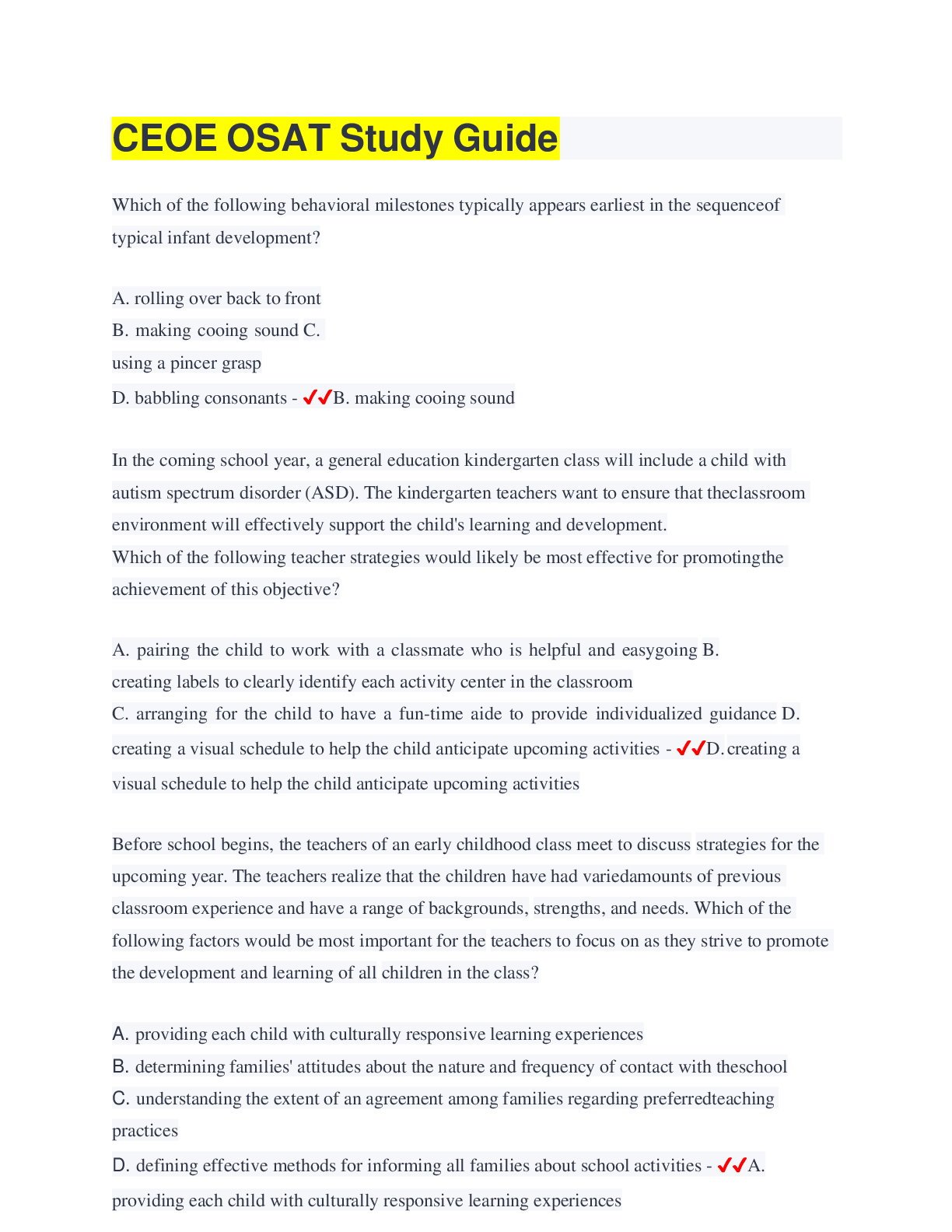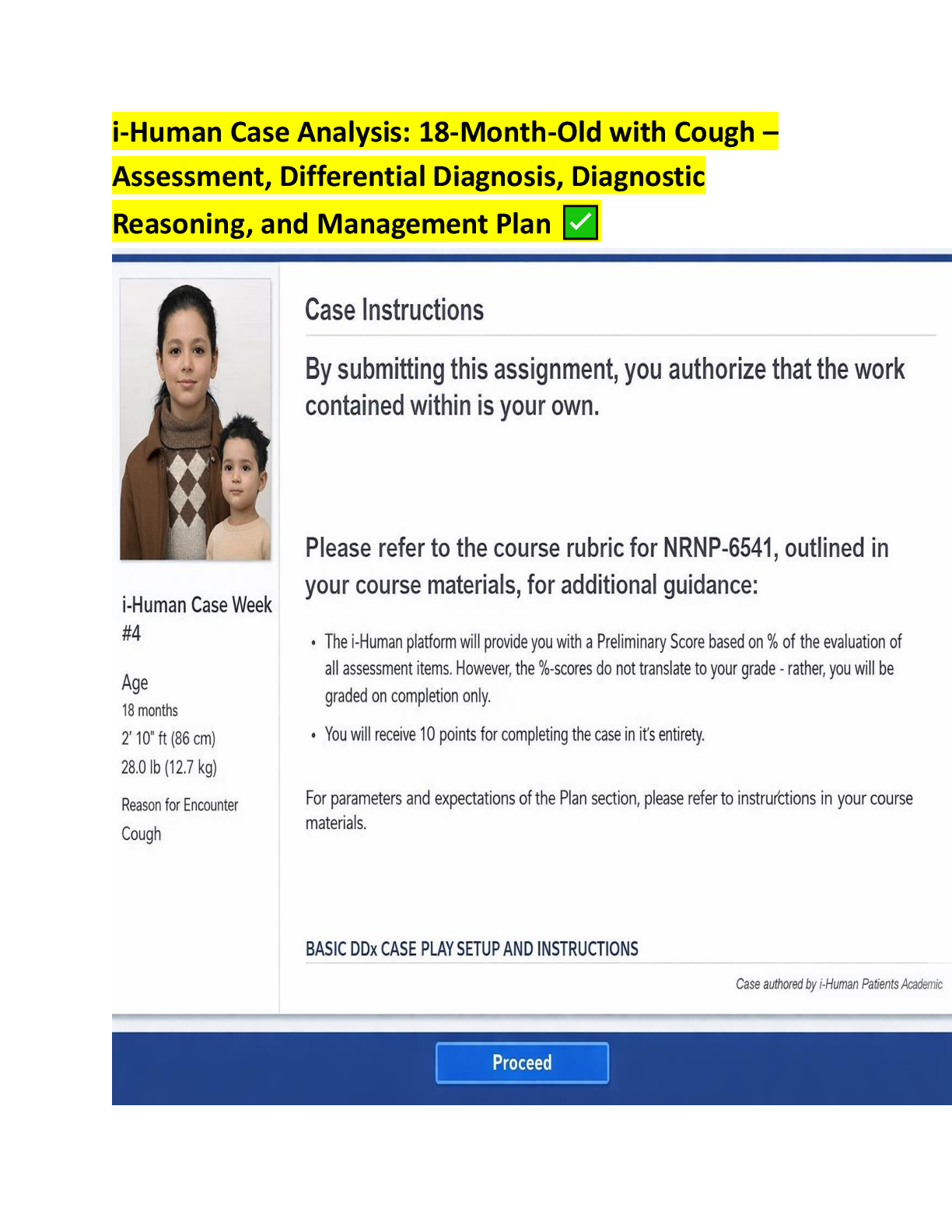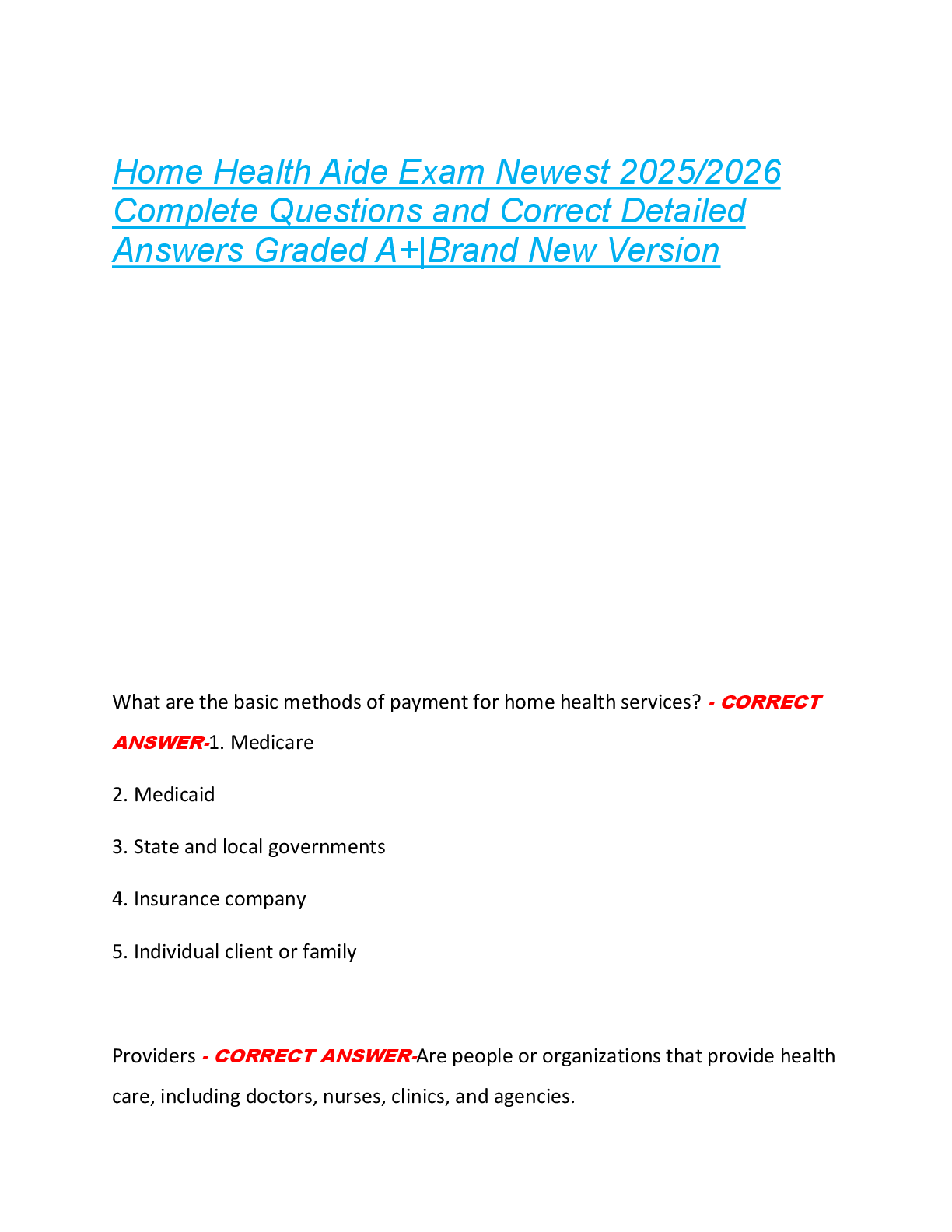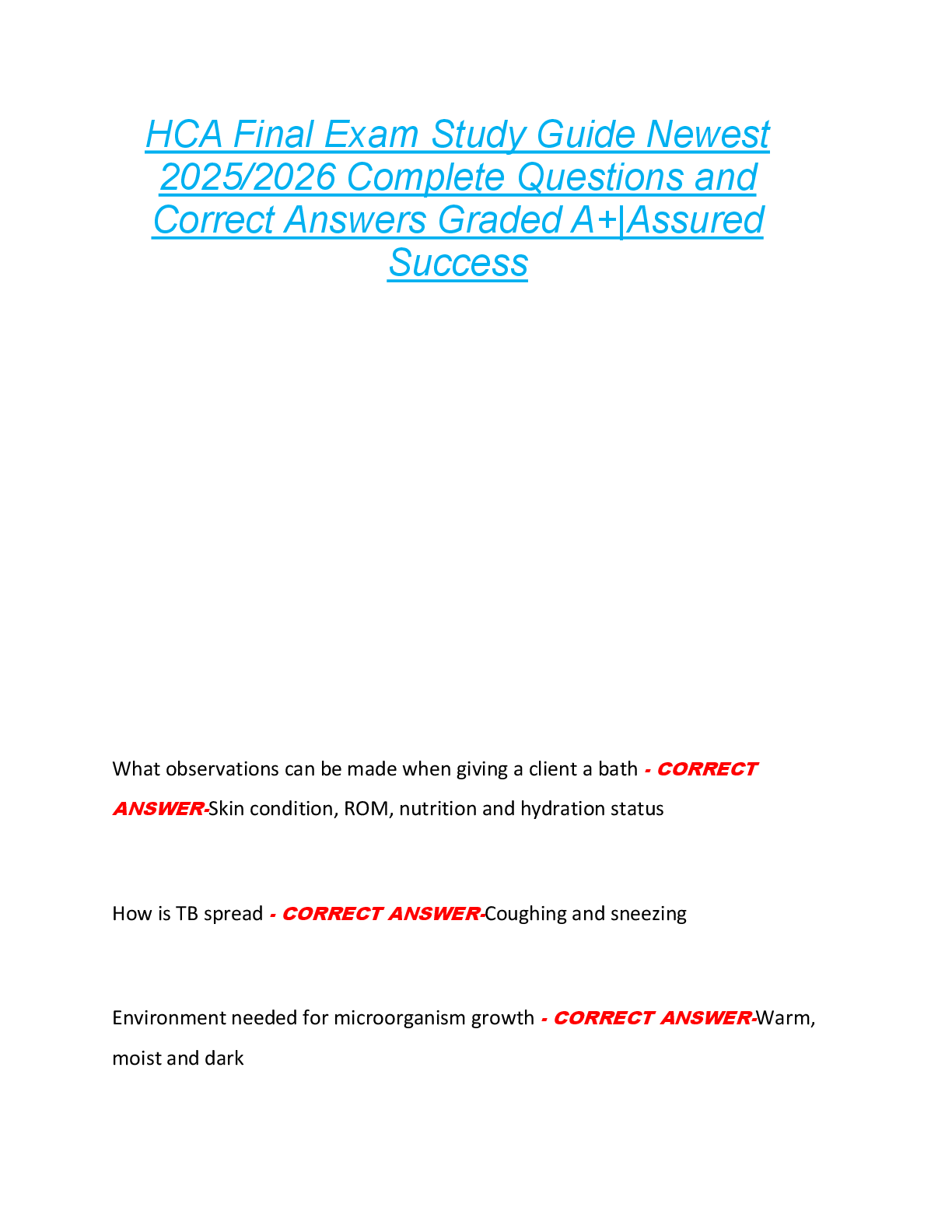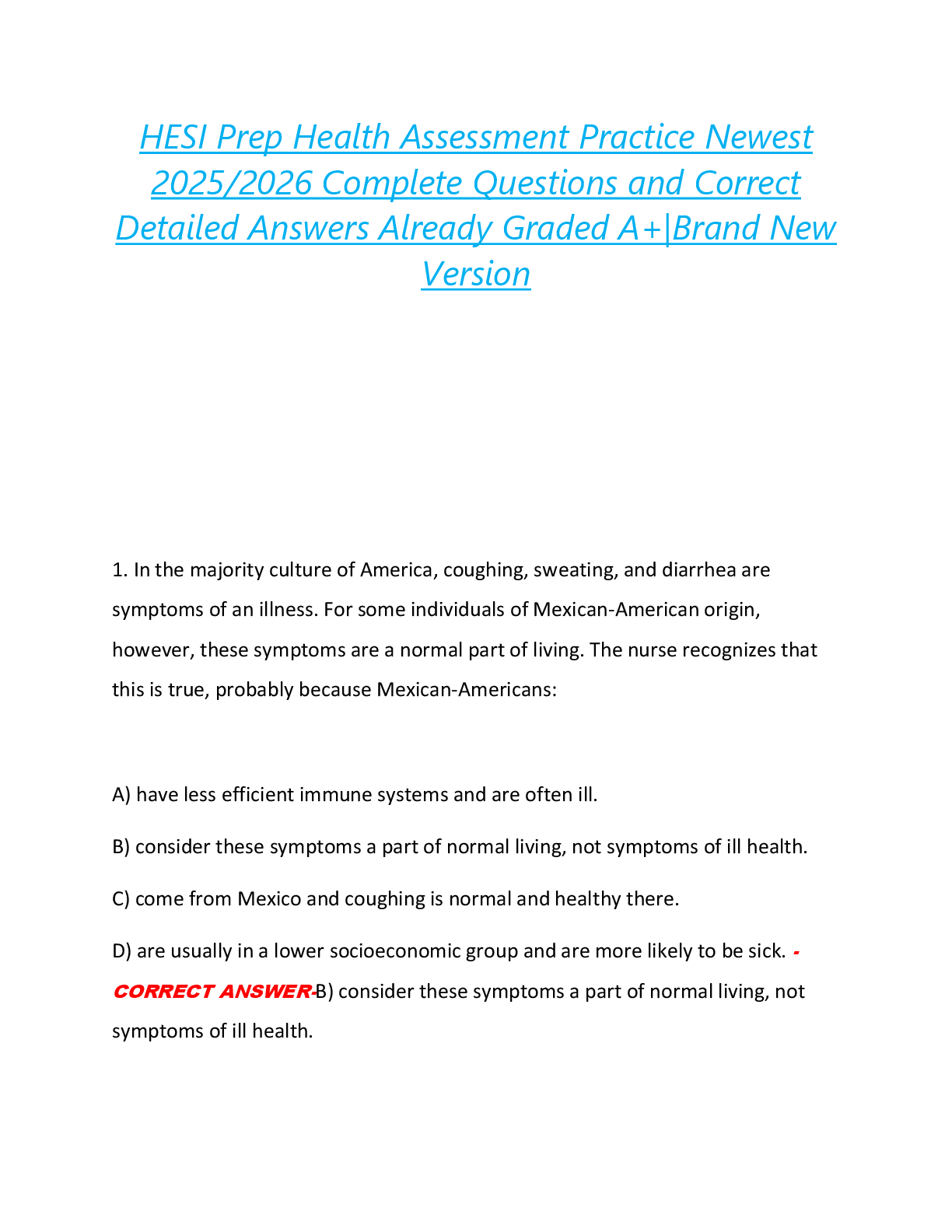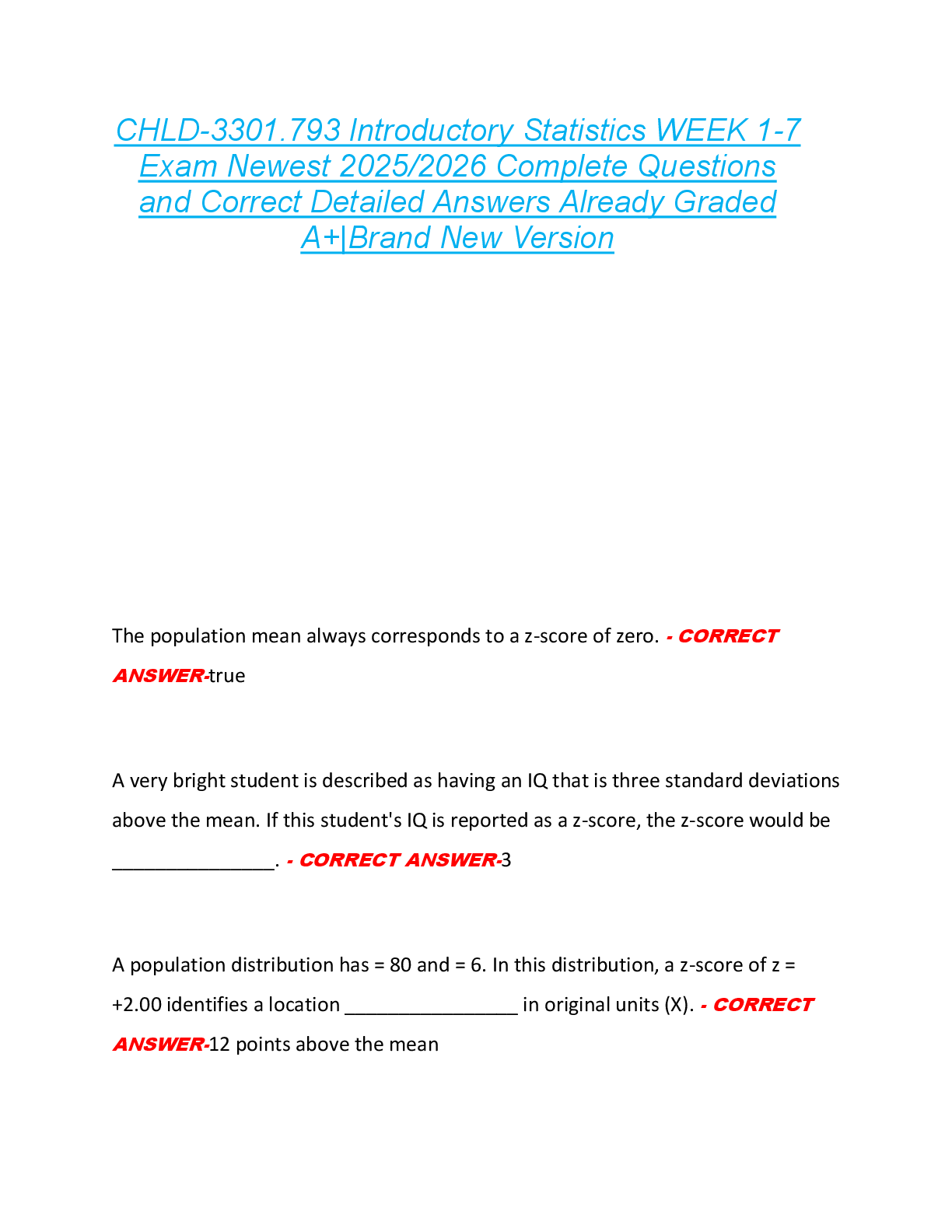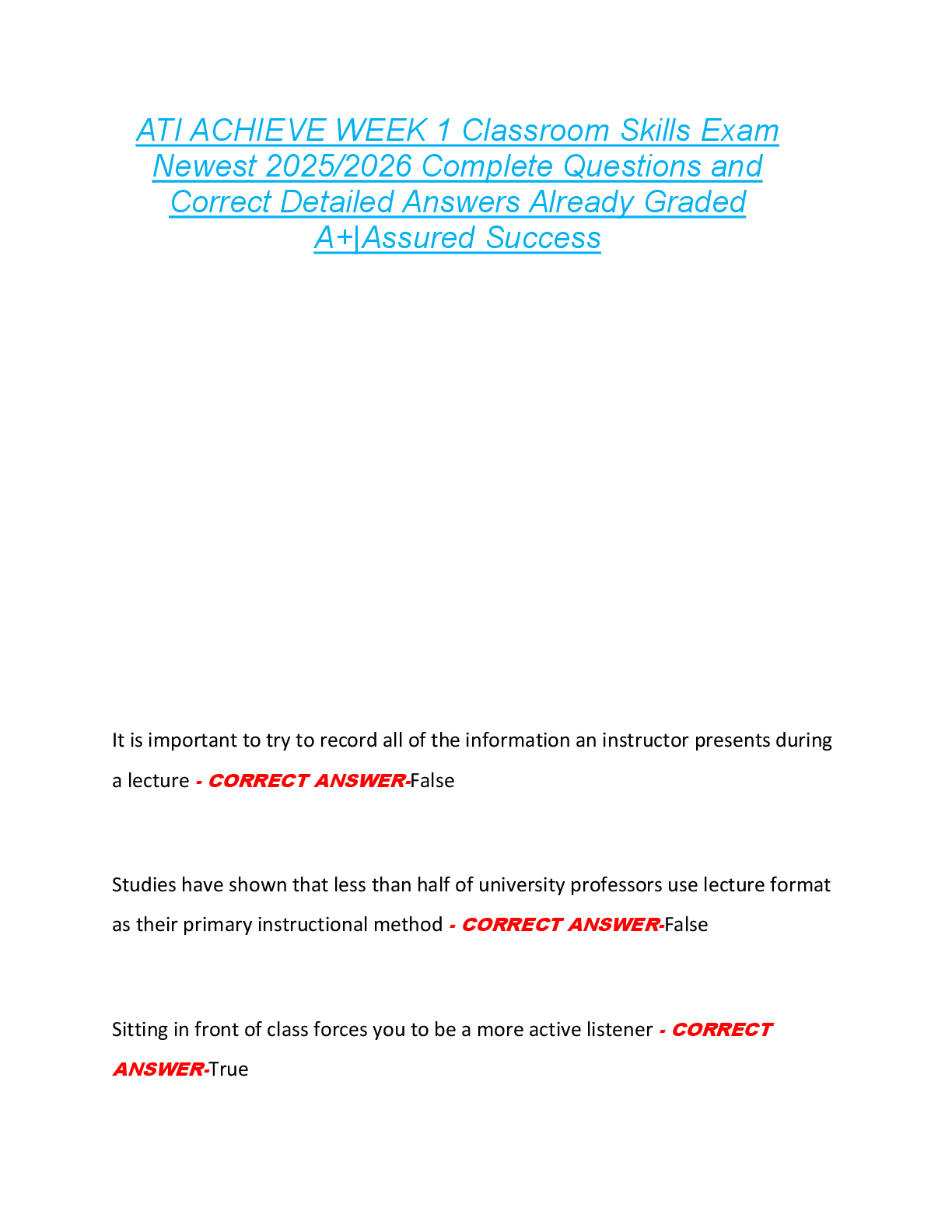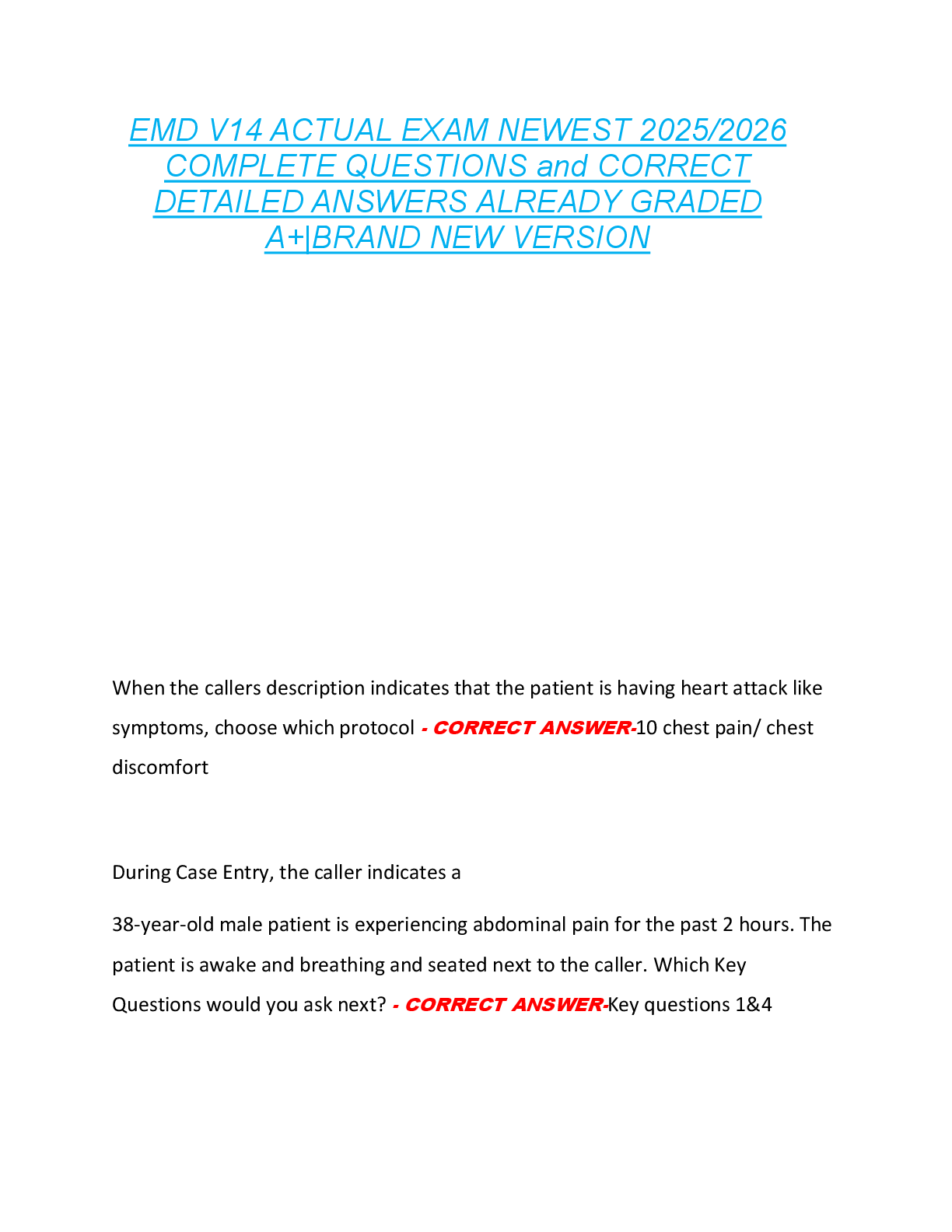*NURSING > EXAM > FPC / CFRN - Review Exam - Version B with complete solutions (LATEST 2022) 137 Questions with 100% C (All)
FPC / CFRN - Review Exam - Version B with complete solutions (LATEST 2022) 137 Questions with 100% Correct Answers
Document Content and Description Below
Myxedema coma is also known as... A. Thyroid storm B. Adrenal insufficiency C. Hypothyroidism D. Hyperaldosteronism - ✔✔Hypothyroidism Most common presentation of a patient with hypothyroidis ... m are all of the following, Except... A. Cold intolerance with coarse hair B. Almost exclusively over the age of sixty C. >90% of cases occur in the winter D. Primarily in men - ✔✔Primarily in men Hypothroidism occurs primarily in women, almost exclusively over the age of sixty, with 90% of the cases occurring in the winter months. Your patient presents with following parameters: CVP 0, CI 1, PA S/D 8/4, wedge 3, and SVR 1,800. What is your diagnosis? A. Hypovolemic shock B. Right ventricular infarction C. CHF D. Sepsis - ✔✔Hypovolemic shock Careful interpretation of the CVP is important!Central venous pressure (CVP) describes the pressure of blood in the thoracic vena cava, near the right atrium of the heart. CVP reflects the amount of blood returning to the heart and the ability of the heart to pump the blood into the arterial system. Drug of choice for profound hypotension in septic shock is? A. Isotonic crystalloid solution B. Levophed C. Nipride D. Dobutamine - ✔✔Levophed Sepsis is by far the most common cause of distributive shock. The average normal ICP range is... A. 0-10 mmHg B. 10-20 mmHg C. 20-30 mmHg D. >30 mmHg - ✔✔Normal ICP range is 0-10 mmHg, but range can go as high as 15 mmHg. The formula to calculate MAP is A. 2/3 DBP × SBP B. 2 × DBP + SBP divided by 3 C. 2 × SBP + DBP D. 2 + DBP × SBP divided by 3 - ✔✔2 × DBP + SBP / 3(normal 80-100 mmHg) Normal coronary perfusion pressure (CPP) is A. 50-60 mmHg B. 70-90 mmHg C. 80-100 mmHg D. <50 mmHg - ✔✔Normal 50-60 mmHg Coronary perfusion pressure: (CPP) = DBP-PAWP The patient presents with the following hemodynamic parameters: CVP 1, CI 1.7, PA S/D 12/6, wedge 6, and SVR 300. Vital signs are 78/40, HR 60, RR 16, SaO2 98%. The most likely cause is... A. RVMI B. Neurogenic shock C. Septic shock D. Hypovolemic shock - ✔✔Neurogenic shock SVR < 800, think distributive shock. Next look at the CI; is it less than 2.5? Hypotension and either a normal heart and/or bradycardia present narrows the type of distributive shock as being neurogenic shock. Severe hypothermic Pt's are at highest risk for which of the following rhythm? A. A-Fib B. Asystole C. V-Fib D. Sinus Brady - ✔✔V-FibSevere: 20-28 (coma, VF common) The drug of choice for a patient exhibiting signs and symptoms of malignant hyperthermia is: A. Anectine B. Sodium bicarbonate C. Dantrolene D. Glucagon - ✔✔Dantrolene Malignant hyperthermia: Characteristic signs are muscular rigidity, followed by a hypercatabolic state; with increased oxygen consumption, increased carbon dioxide production (hypercapnea, usually measured by capnography), tachycardia (fast heart rate), and an increase in body temperature (hyperthermia) at a rate of up to ~2°C per hour, temperatures up to 42°C (108°F) are not uncommon. Induction agent of choice with bronchospastic patients - ✔✔Ketamine (ketalar) Ativan: indication dose, max - ✔✔Lorazepam, seizures, 1-2 mg, max 4 mg Mannitol dose - ✔✔1-2 g/kg Mannitol: an osmotic diuretic, acts by osmosis to ensure urine production and may prevent heme deposition in the kidney. Can be administered to avoid acute renal failure when fluid administration has been ineffective. Drug choice for cyclic antidepressant OD - ✔✔Sodium bicarbonate Drug choice for beta-blocker OD - ✔✔Glucagon Fentanyl dose - ✔✔Sublimaze (3 μg/kg)Treatment for malignant hyperthermia - ✔✔Dantrium (dantrolene) Drug for GI bleeds - ✔✔Sandostatin (octreotide) You have been requested to transport a twenty-year-old female from an ICU with a history of TCA overdose two hours prior to your arrival at the sending facility. Your cardiovascular assessment of the patient would most likely include all of the following with this type of toxicity, EXCEPT... A. Early sinus bradycardia B. Widening QRS C. Prolonged QT and PR interval D. Early tachycardia - ✔✔Early sinus bradycardia Sinus tachycardia is the most common cardiac disturbance seen following TCA overdose. Rhabdomyolysis treatment - ✔✔- preventing shock and preserving kidney fxn - NS with sodium bicarbonate Your patient presents with ABG's of pH 7.39, pCO2 68 HCO3 32, pO2 82. He has history of COPD and weighs 65 kg. He presents with a history of SOB for 3 days with a RR 20 and is on 4 L/minute of oxygen by NC. He speaks in four- to five-word sentences. What acid-base disorder is present? A. Metabolic acidosis with partial compensation B. Respiratory acidosis with complete compensation C. Metabolic alkalosis with no compensation D. Respiratory alkalosis with no compensation - ✔✔Respiratory acidosis with complete compensation. The pCO2 is elevated, which is the primary disorder, and the compensatory response is the increased HCO3. The pH is normal, so there is complete compensation.Which formula can be used when calculating a cerebral perfusion pressure (CPP)? A. [(DBP × 2) + SBP] divided by 3 B. MAP − ICP C. ICP − DBP D. [(DBP + 2) × SBP] divided by 3 - ✔✔MAP − ICP = CPP Normal range (mmHg): 70-90 You are managing a patient who has been diagnosed with hepatic encephalopathy. His ammonia levels are elevated. Your management in preparing this patient for transport is to inhibit elevated protein level by... A. Administering whole blood B. Stop GI bleeding and evacuate bowel of blood C. Aggressive fluid resuscitation D. Aggressive pain control [Show More]
Last updated: 3 years ago
Preview 1 out of 47 pages
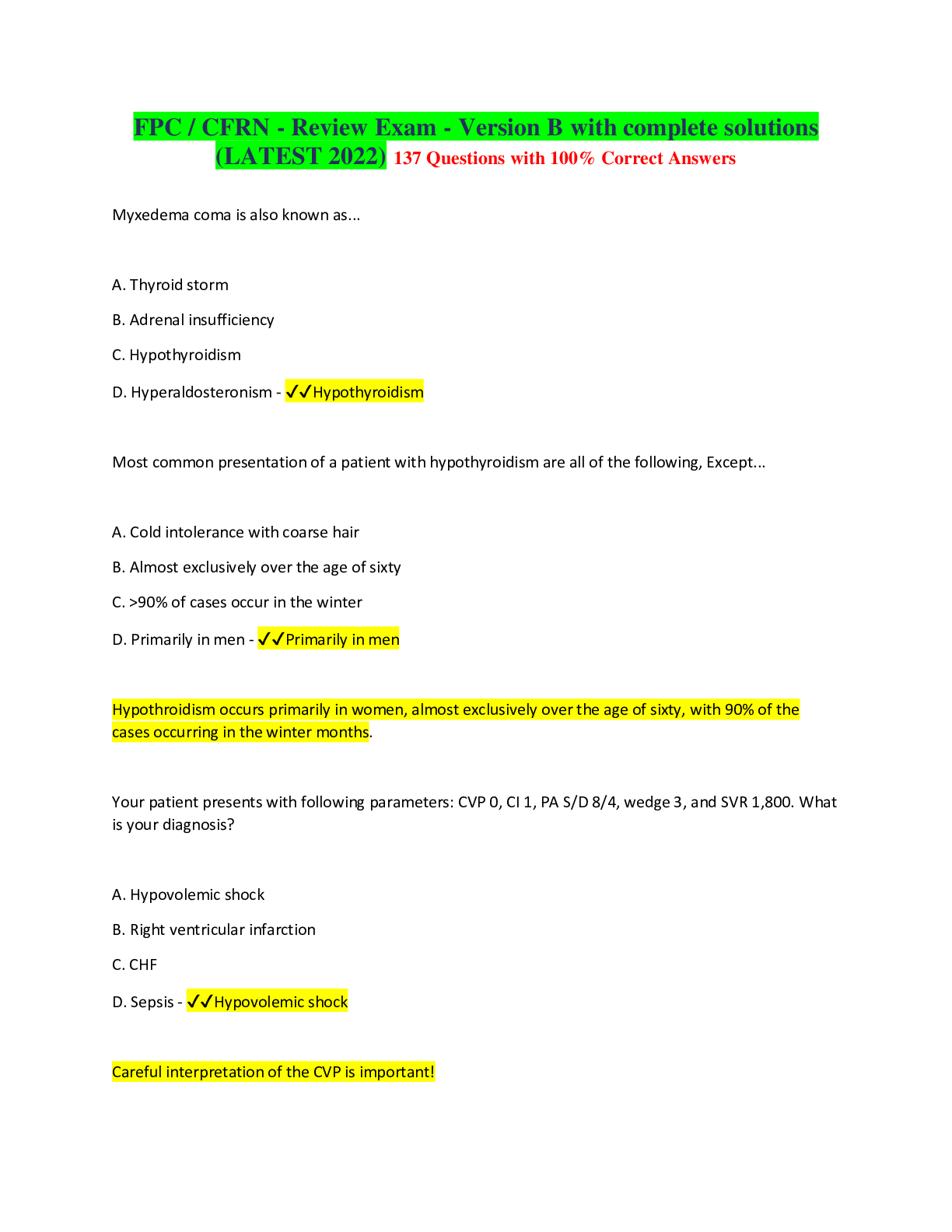
Buy this document to get the full access instantly
Instant Download Access after purchase
Buy NowInstant download
We Accept:

Reviews( 0 )
$12.00
Can't find what you want? Try our AI powered Search
Document information
Connected school, study & course
About the document
Uploaded On
May 16, 2022
Number of pages
47
Written in
All
Additional information
This document has been written for:
Uploaded
May 16, 2022
Downloads
1
Views
118


